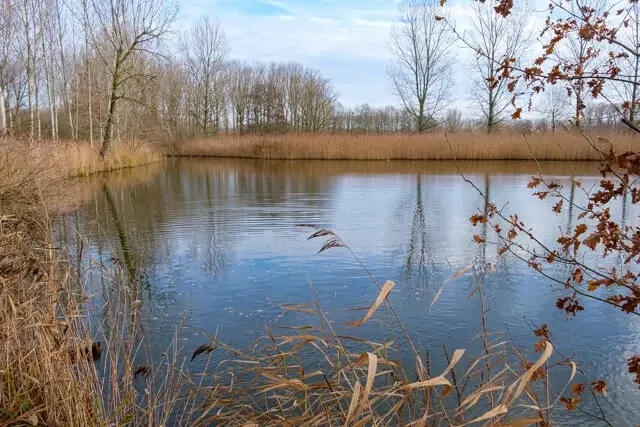Walking route
Paardebroek and Paardeweide


Paardebroek and Paardeweide.
Immediately after departure you can admire the Paardebroek and the Paardeweide from the Scheldt dike, a wetland with valuable nature. Then you walk on wide unpaved roads in the direction of the Riekend resting point, the smallest museum in Flanders. From there it goes through the Berlare Broek to the Castle of Berlare. Through a small piece of heather it goes back in the direction of the starting point.
Distance: 10 km.
Time: 2h30.
Grade: Easy.
Type: Circular.
Gps Track: Yes.
Route description: Yes.
Wheelchair: Not suitable.
Dog: Allowed on leach.
Height gain: Flat.
Trail: Paved and unpaved.
Marking: Walking nodes.
Hiking shoes recommended.
Riekend Rustpunt.
From the starting point you walk along the Scheldt dike to the Paardebroek and the Paardeweide. Here you leave the dike and walk around this valuable piece of nature in the direction of the Riekend resting point, the smallest museum in Flanders. Here people tell us in scents and colors about the trade that Berlare used to know for: that in manure. The Riekend resting point is also a nice picnic area. Then you walk through the Berlare Broek and through the Kasteeldreef to the castle of Berlare. The park is freely accessible. You walk the last part through a piece of heathland to get back to the starting point.
Download PDF for walking nodes to follow.
POI 1 - Paardebroek and Paardeweide.
The Paardebroek was transformed into a wetland with valuable nature that works like a magnet on all kinds of birds. The wetlands in Paardeweide, one of the controlled flooding areas of the Sigma plan, form a changing landscape of wet meadows, reed, open water and alder forest. In the eastern part there is a reed toll, surrounded by deep and shallow water. Such an environment attracts picky birds such as the forest monkey, the quack and the bittern.
More information:
www.natuurenbos.be.
POI 2 - Riekend Rustpunt.
The Riekend Rustpunt, the smallest museum in Flanders, is located on the Sluis on the Scheldt. A permanent exhibition tells you in scents and colors about the trade that Berlare used to know for: that in manure. Free access from 1 April to 30 September. For a long time, the Riekend Rustpunt was a transfer point for manure. Surpluses from the city were taken by boat to the assembly point, where farmers could collect the manure. In the past, the Riekend Rustpunt was connected to the Scheldt via a small watercourse, the Berlaar. But the river was cut off by the construction of the controlled flood area Paardeweide. The water seeped away and reeds and trees took over the surroundings. The former watercourse was transformed back into an amphibian pool. The Riekend Rustpunt is once again on the water.
No additional information.
POI 3 - Berlare Broek.
As part of the peat extraction, the eastern part of the old Scheldemeander was dug out again. As a result, it evolved into a large water surface. In 1862 the water was pumped away. In the years 1914-1918, however, the coal pump stopped and the area was submerged by itself. It was finally drained in 1926. The land that was freed was forested with willows for the basketry. After the Second World War, poplars for the matchmaking were planted by Union Alumettière. In 1979 the Flemish government bought more than 120 hectares here. The domain is a long stretch of 6 km and consists of 2 parts, separated by private property. To the north is the Turfput, a 24-hectare pond. The largest part consists of woodland with swampy areas in between and more than 50 ponds (built in the 60s and 70s). The poplars are gradually being replaced by local trees and shrubs. Such forests offer more variety and have a much higher natural value.
No additional information.
POI 4 - Berlare Castle.
The castle and the outbuildings are not open to the public; the park does. The domain belonged historically to the lord of Berlare. It was rebuilt by the van der Meersche family in the early 18th century, after the previous building was destroyed by troops of Louis XIV. Since 1974, both the castle and its outbuildings, as well as the park, have been fully classified.
No additional information.















































